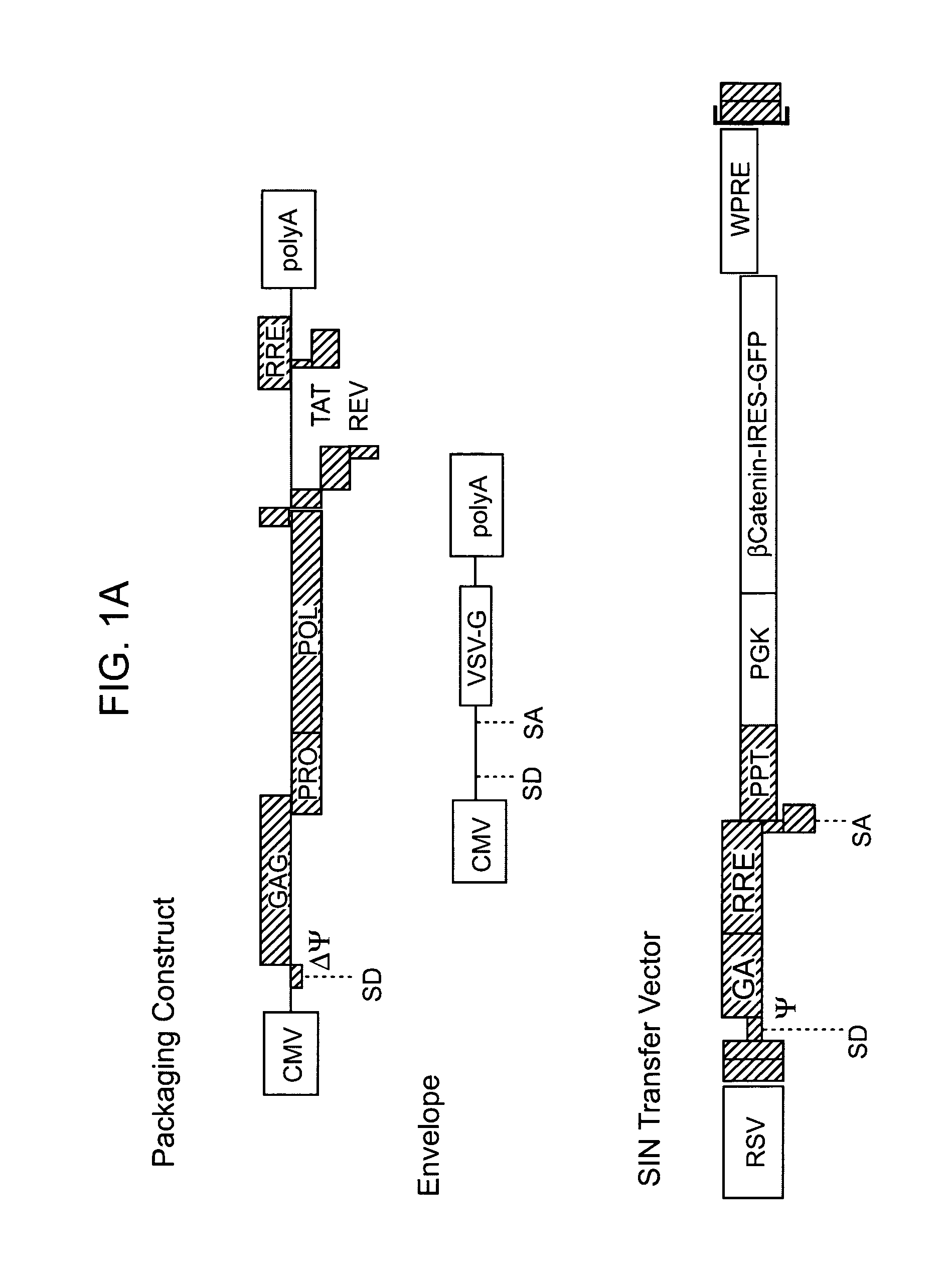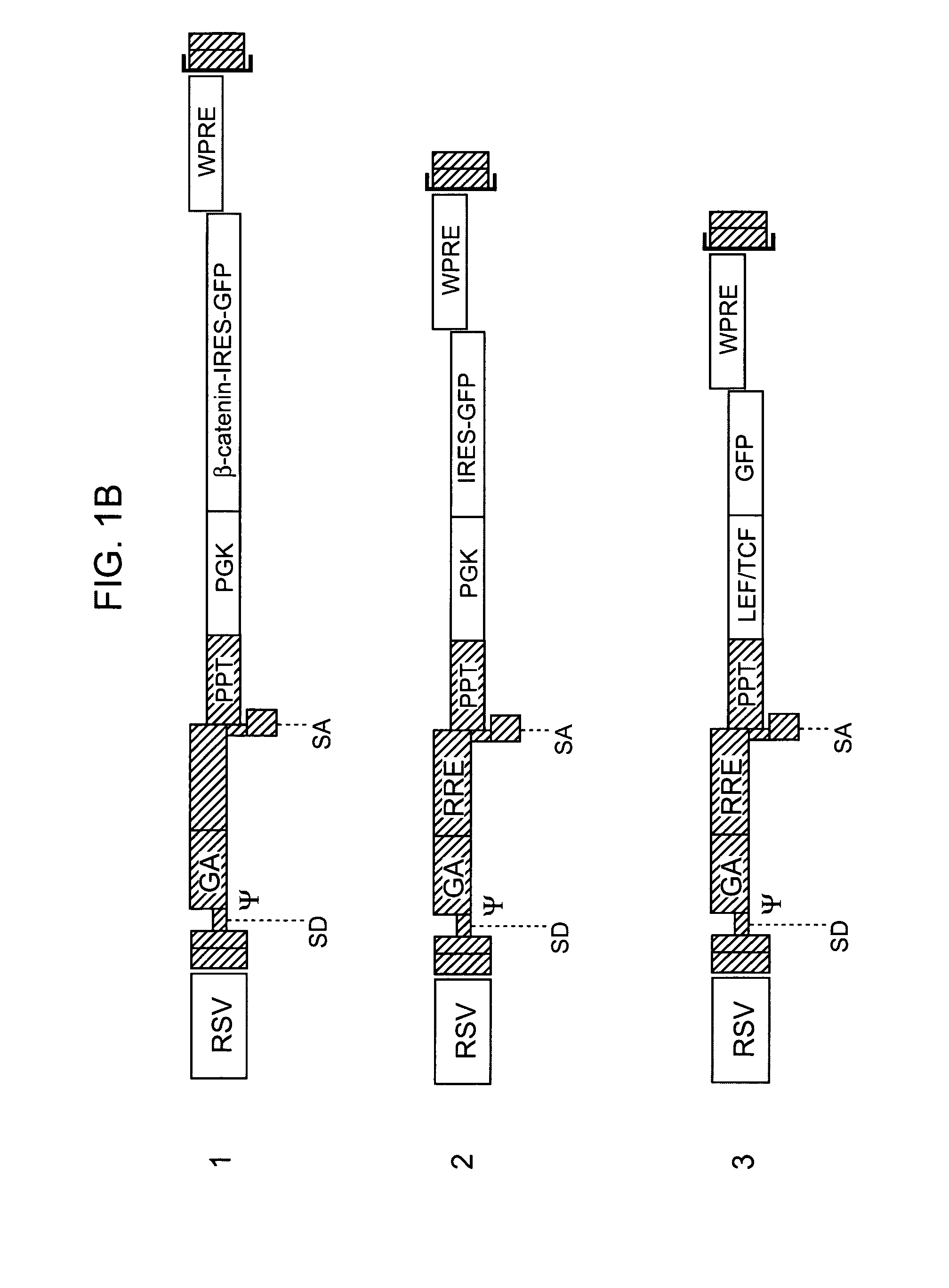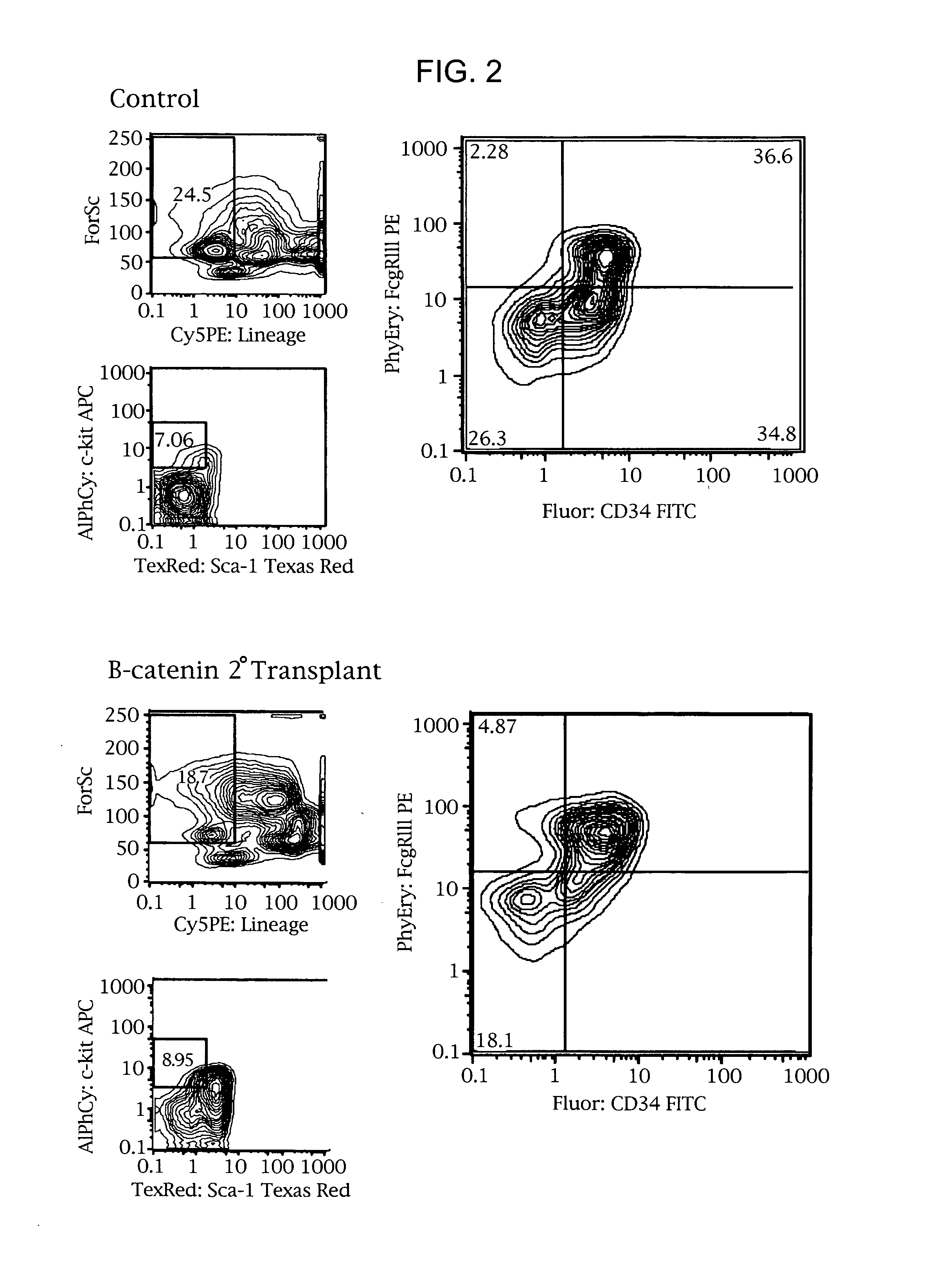Methods of identifying and isolating stem cells and cancer stem cells
a stem cell and cancer stem cell technology, applied in the field of stem cell identification and isolating stem cells and cancer stem cells, to achieve the effect of altering the proliferation of cells
- Summary
- Abstract
- Description
- Claims
- Application Information
AI Technical Summary
Benefits of technology
Problems solved by technology
Method used
Image
Examples
example 1
Sorting and Transplantation of Myeloid Progenitors and Hematopoietic Stem Cell (HSC) Enriched Populations from Leukemic Mice
[0081]Leukemic mouse bone marrow progenitor populations were analyzed and sorted using 5 color flow cytometric analysis (FACS Vantage) and compared with those of control animals. Briefly, bone marrow was flushed from the femurs, a single cell suspension was made by passage through a 25 gauge needle and after washing the cells were incubated with a biotinylated lineage antibody cocktail consisting of CD3, 4, 8, B220, IL-7 Receptor, Thy 1.1, Mac-1, Gr-1 and Ter 119 for 30 minutes followed by washing and addition of Dynabeads for 30 minutes. Lin+ cells were then removed using a Dynal magnetic particle concentrator. Progenitors were stained with anti-CD34 FITC, c-Kit APC, Sca-1 Texas Red and FcγRIII PE for 30 minutes followed by staining with Avidin Cy5 PE for 30 minutes and finally the addition of propidium iodide. Equivalent numbers (5000 / mouse) of GMP (c-kit+ sc...
example 2
Analysis of β-catenin Expression by Normal Versus Leukemic Cells
[0088]Ficoll-enriched mononuclear populations from normal or CML peripheral blood or bone marrow and the CML blast crisis cell line, K562, were stained with anti-β-catenin Alexa-594 (red) conjugated antibody and counterstained with Hoechst (blue) for nuclear visualization and then analyzed for cytoplasmic versus nuclear localization of β-catenin using a dual photo Zeiss LSM confocal fluorescence microscope. Both cytoplasmic and nuclear β-catenin expression were higher in K562 and CML mononuclear cells compared with normal cells.
[0089]Human hematopoietic stem and myeloid progenitor cell populations were stained, analyzed and sorted with the aid of a FACS Vantage using a modification of previously described methodology (Manz et al P.N.A.S. (2002) 99:11872–11877). Briefly, mononuclear and CD34+ normal or CML chronic phase (CP), accelerated phase (AP) or blast crisis (BC) peripheral blood and bone marrow cells were stained ...
example 3
[0091]HSCs in vivo normally signal via LEF / TCF elements. It was determined whether HSCs in vivo utilize signals associated with the Wnt / Fzd / beta-catenin pathway. Sorted KTLS HSCs were infected with vectors carrying the LEF-1-TCF reporter driving expression of destabilized GFP (TOP-dGFP) or control reporter construct carrying mutations in the LEF / TCF binding sites (FOP-dGFP), and transplanted into lethally irradiated mice. The HSCs were then transplanted into groups of irradiated recipient mice and recipient bone marrow examined after 14 weeks to determine whether donor HSCs demonstrated reporter activity. In the representative example shown, donor derived HSCs infected with TOP-dGFP were found to express GFP in 29% of the cells while HSCs from the recipient mouse were negative for GFP. Moreover, only 2.5% of HSCs transduced with the control FOP-dGFP reporter expressed GFP, demonstrating that functional LEF-TCF binding sites were specifically required for KTLS HSC expression of GFP.
[...
PUM
| Property | Measurement | Unit |
|---|---|---|
| Time | aaaaa | aaaaa |
| Fluorescence | aaaaa | aaaaa |
Abstract
Description
Claims
Application Information
 Login to View More
Login to View More - R&D
- Intellectual Property
- Life Sciences
- Materials
- Tech Scout
- Unparalleled Data Quality
- Higher Quality Content
- 60% Fewer Hallucinations
Browse by: Latest US Patents, China's latest patents, Technical Efficacy Thesaurus, Application Domain, Technology Topic, Popular Technical Reports.
© 2025 PatSnap. All rights reserved.Legal|Privacy policy|Modern Slavery Act Transparency Statement|Sitemap|About US| Contact US: help@patsnap.com



